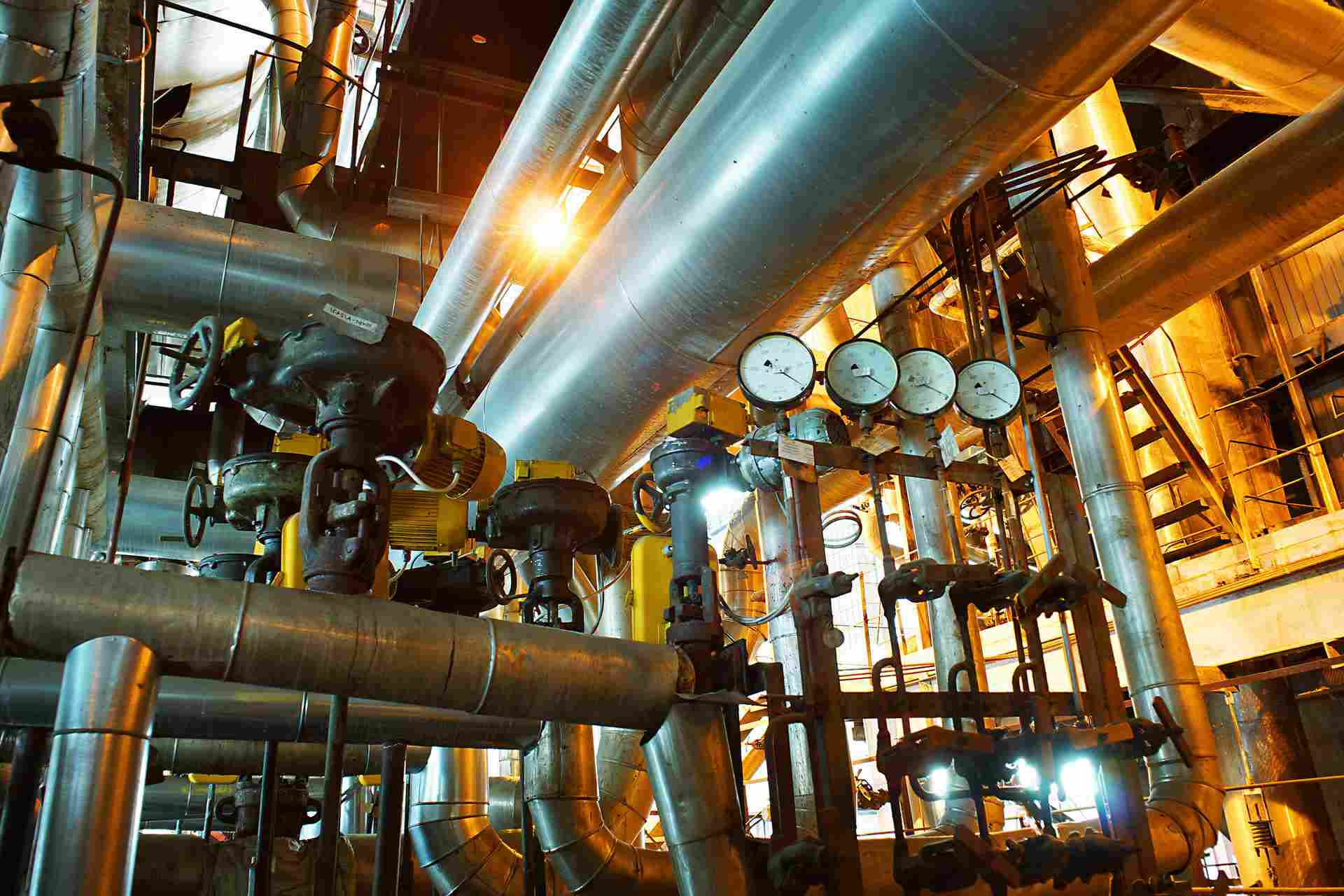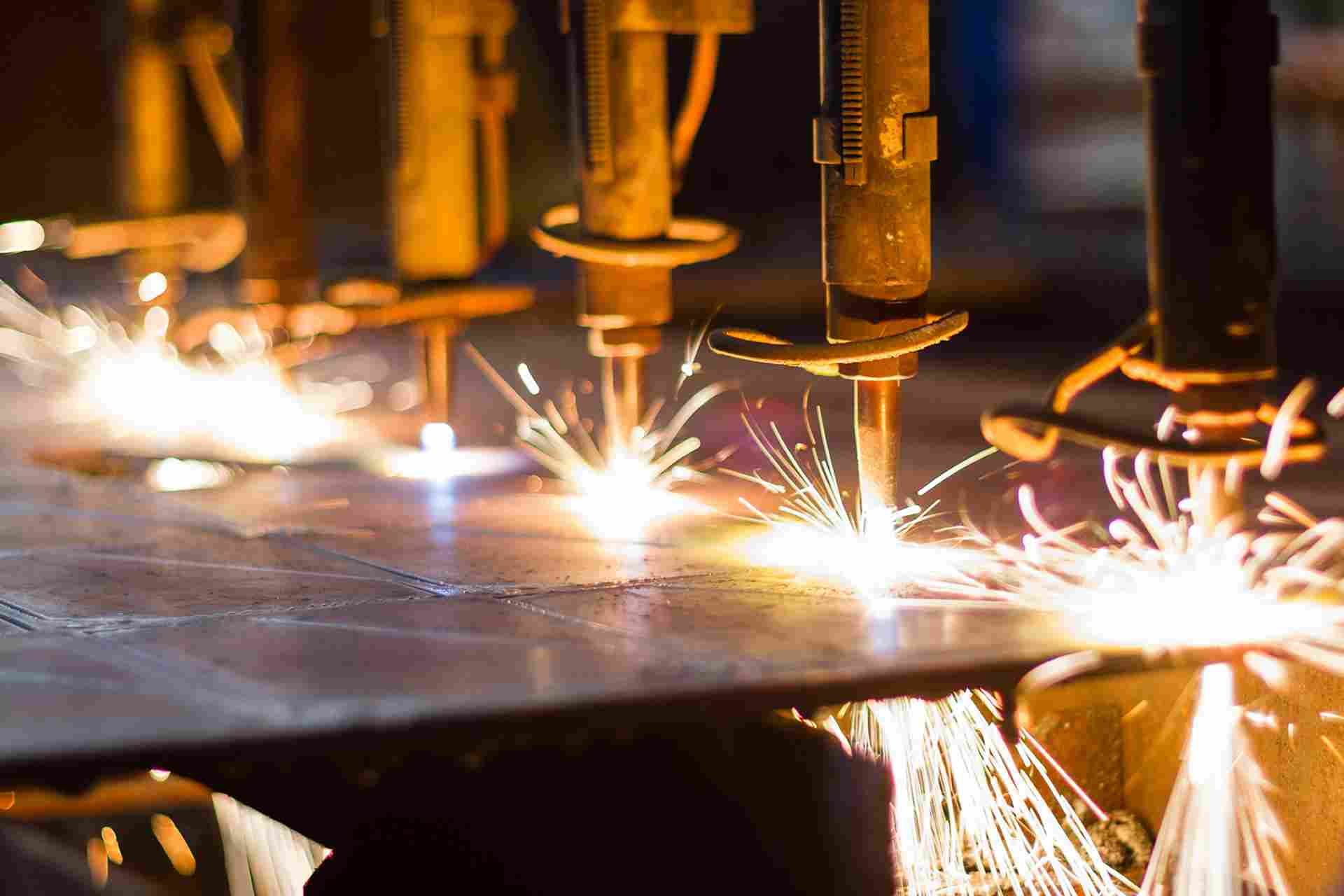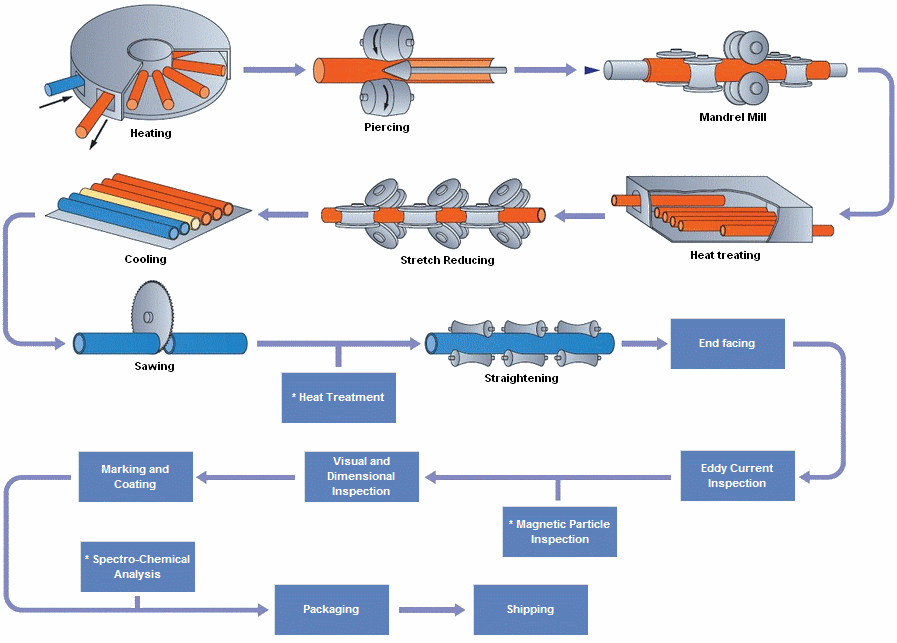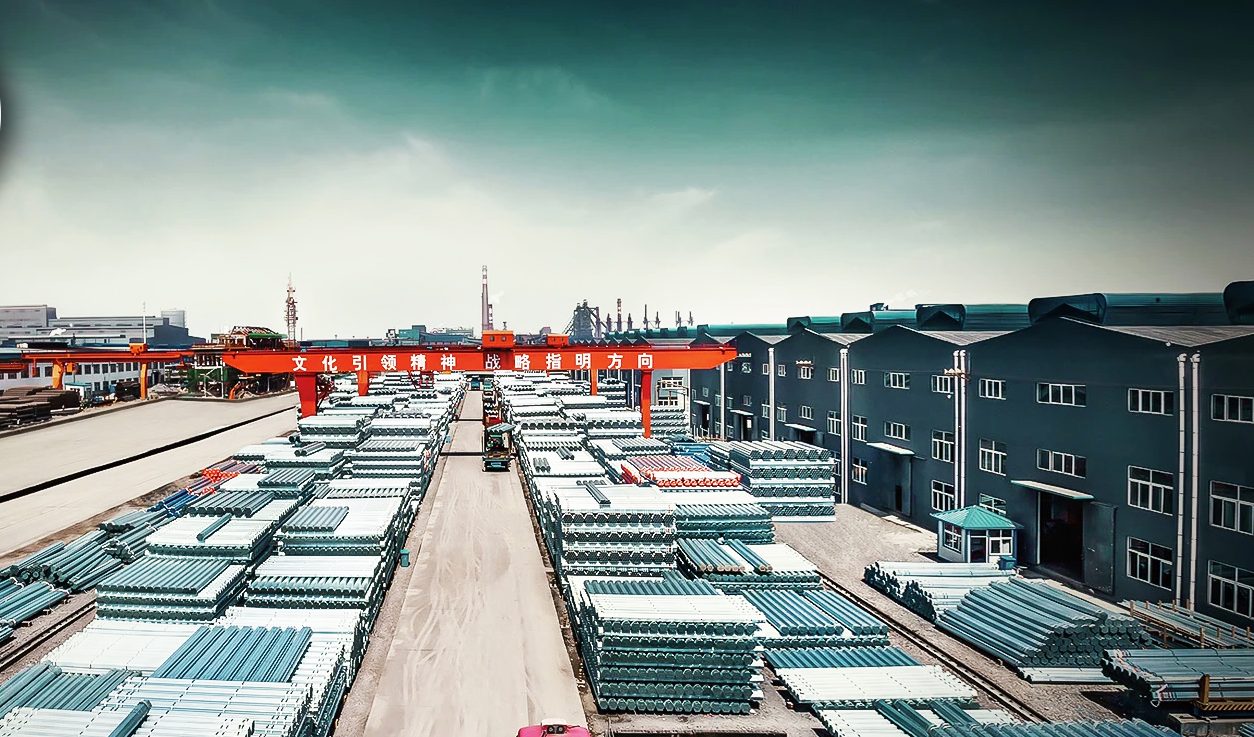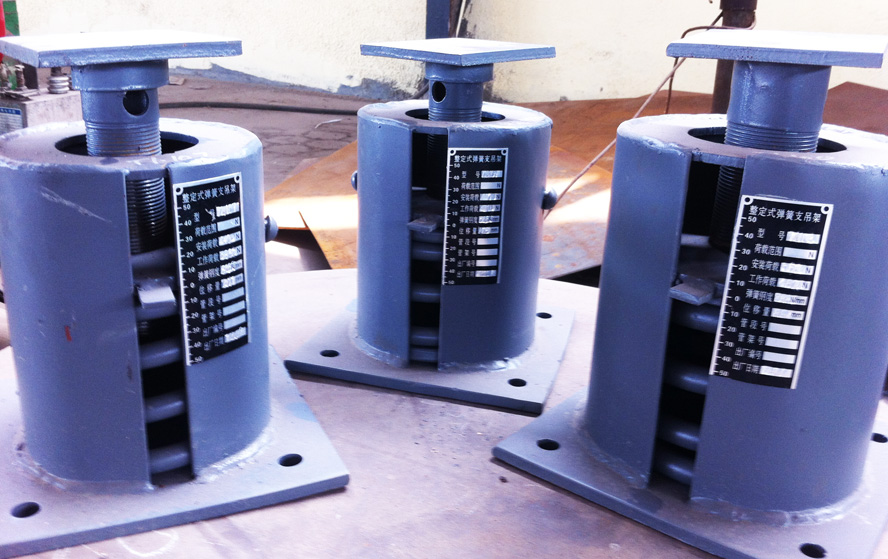تأثير درجة حرارة التخفيف على البنية المجهرية وخصائص فولاذ غلاف الزيت المستخدمة للآبار العميقة
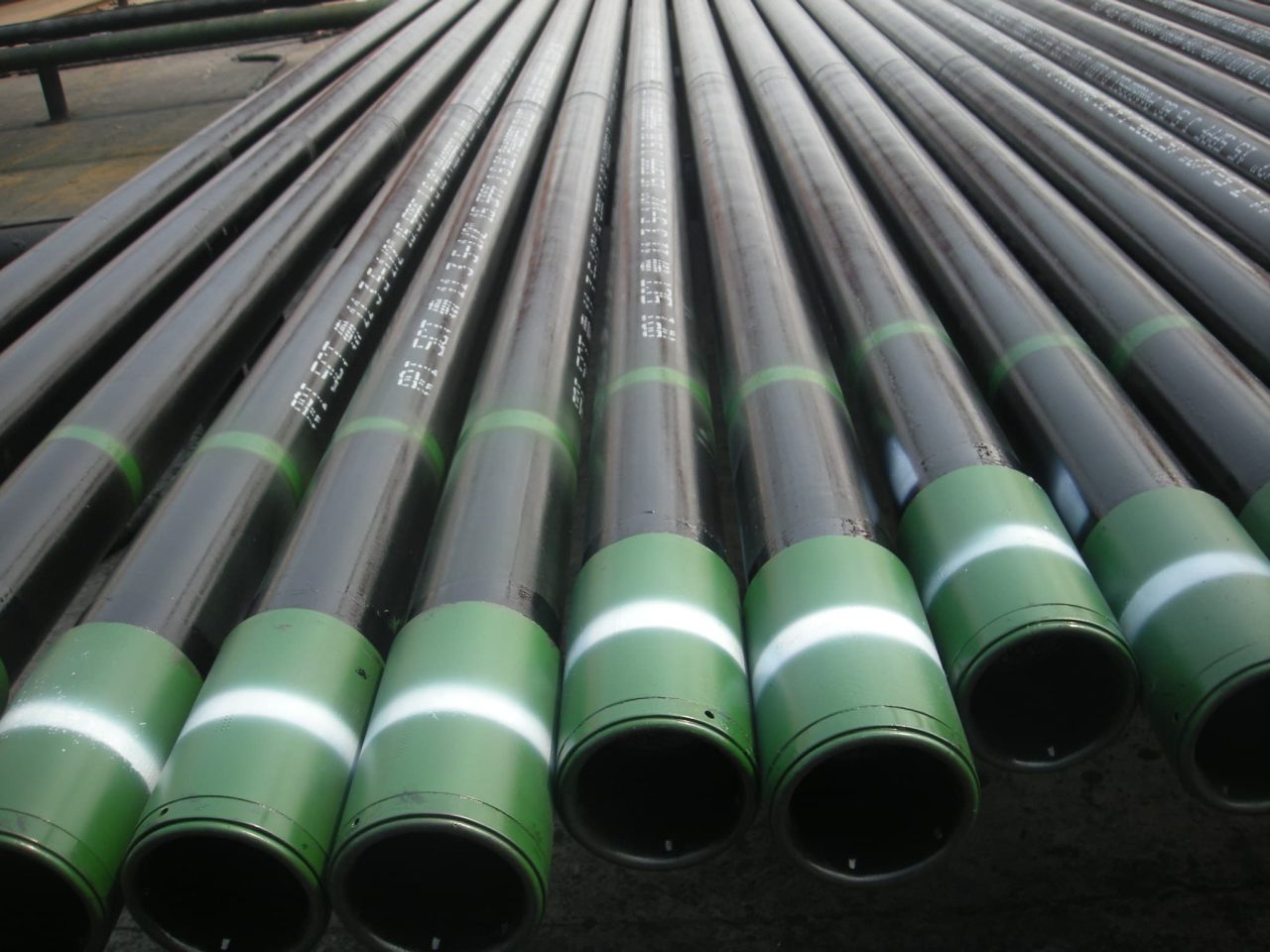
تأثير درجة حرارة التخفيف على البنية المجهرية وخصائص فولاذ غلاف الزيت المستخدمة للآبار العميقة
المؤلفون: وانغ جياجياو, تشاو لينلين, قاو يونزهي, شي شوي, وو شياوولونج, تشاو يانكينغ, تشو يوكينغ, غونغ جونجي
(شركة Hebei Dahe Materials Technology Co., المحدود., شيجيازهوانغ, خبي 050023)
خلاصة: تمت دراسة تأثير درجة حرارة التخفيف بعد التبريد عند 920 درجة مئوية على البنية المجهرية والخصائص الميكانيكية لصلب غلاف الزيت العميق عن طريق المجهر البصري (سواء), مسح المجهر الإلكتروني (أيّ), وآلات اختبار الشد. أظهرت النتائج أن الفولاذ المختبري الذي تم تخفيفه عند 500-600 درجة مئوية يحصل, عرض قوة عالية, اللدونة, والمتانة, مع منتج من القوة والاستطالة تتراوح بين 20.5 ل 22.1 GPA · ٪ وتأثير امتصاص الطاقة التي تتراوح من 94.6 ل 100.3 ج. عندما تكون درجة حرارة التخفيف 550 درجة مئوية, يعرض الفولاذ المختبر لغلاف الزيت العميق أفضل الخصائص الميكانيكية الشاملة, مع قوة الشد 978 MPa, عائد قوة 935 MPa, نتاج القوة واستطالة 22.1 GPA · ٪, والتأثير امتصاص الطاقة 100.3 ج.
الكلمات الرئيسية: زيت غلاف الصلب; درجة حرارة تقع; البنية المجهرية; الخصائص الميكانيكية
1. مقدمة
مع زيادة المنافسة العالمية على موارد الطاقة الاستراتيجية, اجتذبت موارد النفط والغاز اهتمامًا كبيرًا. إن قدرتهم الاحتياطية ومستويات الاستخراج لها أهمية كبيرة لتحديث المجتمع 1-2]. بسبب الاستغلال المستمر لموارد طاقة النفط والغاز لأكثر من قرن, لم تتمكن احتياطيات موارد طاقة النفط والغاز بسهولة على سطح الأرض من تلبية الطلب البشري, مما يؤدي إلى زيادة نسبة استغلال موارد طاقة النفط والغاز العميقة والعمق العميق -4]. وفقا للإحصاءات, في السنوات الأخيرة, استمر عمق آبار النفط والغاز على مستوى العالم في النمو بسرعة, مع عمق الآبار العميقة التي تتجاوز 5000 م, تضاعف ما يقرب من قبل من قبل. بيئة خدمة أغلفة النفط والغاز معقدة وقاسية, ومع الزيادة المستمرة في عمق آبار النفط والغاز, لضمان السلامة, الأغلفة المستخدمة مطلوبة للحصول على قوة عالية, اللدونة العالية, والأداء ذو التأثير العالي 5-6].
2. المواد والأساليب التجريبية
تم صهر الفولاذ المختبر المستخدم في هذه الورقة في أ 50 فرن كيلوغرام فراغ ويلقي في قاطرة فولاذية مع التركيب الكيميائي التالي (الكسر الجماعي, %): 0.22ج, 0.20و, 1.35من, 0.28كر, 0.17شهر, 0.18V, توازن Fe. تم تسخين البليت الصلب المصهر إلى 1250 درجة مئوية وتمسك به 120 دقيقة في فرن الحفاظ على الحرارة, ثم تدحرجت في 15 ملاط ملموس الساخن مع درجة حرارة لفة أولية أعلى من 1150 درجة مئوية ودرجة حرارة المتداول النهائية أعلى من 850 درجة مئوية. ثم تم تبريده إلى درجة حرارة الغرفة بواسطة دفن الرمل. المعادن, تأثير, وتم قطع فراغات عينة الشد من البلاطة المفة الساخنة, يتم تسخينها إلى 920 درجة مئوية وتمسك بها 40 دقيقة في فرن تسخين المقاومة الكهربائية, ثم تم توسيع المياه إلى درجة حرارة الغرفة. تبعًا, تم تسخينها إلى 500 درجة مئوية, 550درجة مئوية, و 600 درجة مئوية وتم عقده 60 دقيقة, تليها تبريد الهواء إلى درجة حرارة الغرفة.
3. النتائج التجريبية والمناقشة
3.1 تأثير درجة حرارة التخفيف على البنية المجهرية
يوضح الشكل صور OM و SEM للصلب الذي تم اختباره بعد تبريد الماء والتهدئة في درجات حرارة مختلفة 1. يمكن أن نرى أن البنية المجهرية ذات التفسير المائي هي مخدر نموذجي, مع حدود حبوب أوستنيت مرئية بوضوح (باغ) وحدود لوث, وهيكل موحد. بعد التخفيف في درجات حرارة مختلفة, يتم الحصول على sorbite المقسى. بعد التخفيف عند 500 درجة مئوية, لا يزال الفولاذ المختبر يحتفظ ببنية اللوح من martensite المطفأ, مع PAGB الصافية مصحوبة بهطول كربيد يشبه الأفلام, وتوزيع كربيدات قصيرة تشبه القضيب في الغالب على حدود اللاحق وعلى المخورات. بعد التخفيف عند 550 درجة مئوية, يبدأ PAGB من الصلب الذي تم اختباره في طمس, يرافقه هطول الأمطار من كربيدات القضيب القصيرة, ويبدأ هطول الأمطار كربيد. بعد التخفيف عند 600 درجة مئوية, PAGB من الصلب الذي تم اختباره يزيد من تطورات, ولا يمكن ملاحظة أي حدود لوث واضحة. تصبح الكربيد أكثر كروية وأدق. مع زيادة درجة حرارة تقع, يزداد درجة الاسترداد وإعادة التبلور من الصلب الذي تم اختباره باستمرار, حدود PAGB و Lath تدريجيا, هطول كربيد الشبه العروفي تدريجيا, ويتناقص حجم الكربيد تدريجيا. تجدر الإشارة إلى أن الحجم المجهرية للصلب الذي تم اختباره لا يتغير بشكل كبير مع زيادة درجة حرارة التهدئة, الذي يعزى إلى إضافة عنصر MO في الصلب الذي تم اختباره. أظهرت الدراسات السابقة أن عنصر MO له آثار تقوية الحلول الصلبة, زيادة المتانة, وتعزيز الاستقرار المتقلب -8]. يحتوي الفولاذ المختبر أيضًا على عنصر V, الذي له تأثير تعزيز هطول الأمطار ]. في الدراسات السابقة, لقد وجد أن هطول الأمطار كربيد الغرامة والمشتت هو أسمنت سبيكة (M3C), كربيد صلبة ثانوية (V,X)ج, والكربيد غير المحلول (V,X)ج خلال أوستنتيز, حيث M = Fe, كر, من; س = مو, كر 10-12]. علاوة على ذلك, هطول التشتت المتماسك للمرحلة الثانية التي تشكلها عناصر تتبع مثل خلع دبابيس MO و V, تحسين الخواص الميكانيكية للصلب الذي تم اختباره. توجد درجات حرارة ذروة تصلب الهطول الثانوية لعناصر MO و V في نطاقات 570-580 درجة مئوية و 600-625 درجة مئوية, على التوالى 13].
3.2 تأثير درجة حرارة التخفيف على الخواص الميكانيكية
تظهر الخواص الميكانيكية للصلب الذي تم اختباره في درجات حرارة مختلفة في الشكل 2. كما يتضح من الشكل 2(أ), تنخفض كل من قوة الشد وقوة العائد تدريجيا مع زيادة درجة حرارة التخفيف. هذا لأنه أثناء التخفيف, يخضع هيكل مارتينسيت عالي الكربون الذي تم إخماده إلى الانتعاش, ويخضع الخلع لإعادة تنظيم الانزلاق وإلغاء المتبادل, أي., تنخفض كثافة الخلع, كلاهما يخفف من البنية المجهرية 4-15]. بشكل ملحوظ, تتراوح قوة الشد من 961 ل 1023 MPa, وتتراوح قوة العائد بين 928 ل 992 MPa, تشير إلى مجموعة صغيرة من تغييرات القوة. خلال تقع, كربيدات جيدة ومشتتة تترسب باستمرار, إنتاج تأثير تعزيز. تعوض آثار التعزيز والتليين بعضها البعض, مما أدى إلى تقلبات صغيرة من القوة, الذي يتوافق مع البنية المجهرية المقسمة. مع زيادة درجة حرارة تقع, إن ناتج القوة والاستطالة والتأثير امتص طاقة الفولاذ المختبر كلاهما يظهر اتجاهًا للزيادة أولاً ثم يتناقص, كما هو مبين في الشكل 2(ب, ج). نتاج القوة والاستطالة يتراوح بين 20.5 ل 22.1 GPA · ٪, ويتراوح التأثير الذي تم امتصاصه للطاقة 94.6 ل 100.3 ج. إنه, يعرض الفولاذ المختبر قوة عالية, اللدونة, والصلابة ضمن نطاق درجة حرارة التخفيف. عندما تكون درجة حرارة التخفيف 550 درجة مئوية, يحتوي الفولاذ المختبر على أفضل الخصائص الميكانيكية الشاملة, مع قوة الشد 978 MPa, عائد قوة 935 MPa, نتاج القوة واستطالة 22.1 GPA · ٪, والتأثير امتصاص الطاقة 100.3 ج, إظهار قوة عالية ومتانة عالية.
3.3 تأثير درجة حرارة التخفيف على سلوك الكسر
يظهر الشكل التشكل في منطقة انتشار كسور الشد من الفولاذ المختبر في درجات حرارة مختلفة 3. يمكن أن نرى أنهم جميعًا يعرضون تشكلات كسر الدكتايل التي تتميز بدمامل غرامة, برفقة حواف تمزيق (المشار إليها من قبل الأسهم) وشقوق ثانوية صغيرة, الذي يتوافق مع المنتج العالي للقوة واستطالة الفولاذ المختبر, مما يشير إلى اللدونة العالية. يظهر الشكل التشكل في منطقة الانتشار لكسور تأثير الفولاذ المختبرة في درجات حرارة مختلفة 4. يمكن أن نرى أنهم جميعا يعرضون مورفولوجيا dimple, مع دمامل ضحلة وصغيرة مصحوبة بحواف تمزيق (انظر الشكل 4(ج), سهم), الذي يتوافق مع الطاقة العالية التي تم امتصاصها, مما يشير إلى صلابة عالية من الفولاذ المختبر.
4. الاستنتاجات
- يحصل الفولاذ المتطور على غلاف زيت بئر عميق على البروزور المخففة في نطاق درجة حرارة التخفيف من 500-600 درجة مئوية, مع درجة استرداد هيكل martensite lath يتزايد باستمرار, والكربود الشبوي والتشتت بشكل مستمر.
- ضمن نطاق درجة حرارة التخفيف من 500-600 درجة مئوية, يعرض الفولاذ المختبر قوة عالية, اللدونة, والمتانة, مع نتاج القوة والاستطالة التي تتراوح بين 20.5 ل 22.1 GPA · ٪ والتأثير امتص الطاقة التي تتراوح من 94.6 ل 100.3 ج.
- عندما تكون درجة حرارة التخفيف 550 درجة مئوية, يحتوي الفولاذ المختبر على أفضل الخصائص الميكانيكية الشاملة: قوة الشد 978 MPa, عائد قوة 935 MPa, نتاج القوة واستطالة 22.1 GPA · ٪, والتأثير امتصاص الطاقة 100.3 ج.
مراجع
-
- Knittel C ص. تقليل استهلاك البترول من النقل [ج]. مجلة المنظورات الاقتصادية, 2012, 26(1): 93-118.
- لو شياوشيينغ, لي تشين, لي تشونكسيانغ. تطوير غلاف خاص TP110H لآبار الاسترداد الحرارية ذات القوة الثقيلة عالية القوة J]. أنابيب الصلب, 2007, 36(5): 14-17.
- لي تشوبو, BI Zongyue, تشانغ فنغ, وآخرون. بحث وتطوير Q125 من الدرجة الفولاذية غلاف زيت خياطة [ج]. الأنابيب والأنابيب الملحومة, 2013, 36(8): 32-35.
- Zhang Yilong. دراسة على البنية المجهرية وخصائص الصلب المقاوم للتآكل لغلاف الزيت [د]. تشونغتشينغ: جامعة تشونغتشينغ للعلوم والتكنولوجيا, 2018.
- بينغ شيانينغ. البحث عن البنية المجهرية والخصائص الميكانيكية لمادة غلاف زيت 100V-CR-MO [د]. Lanzhou: جامعة لانزو للتكنولوجيا, 2012.
- غو تشنغغوان. دراسة عن قانون تأثير عملية التبريد الخاضعة للرقابة على البنية المجهرية وخصائص غلاف زيت V140 د]. شنيانغ: الجامعة الشمالية الشرقية, 2019.
- شين يوتاو, زو بينغبينغ, وو شياوشون. تأثير MO على الاستقرار الحراري لـ 4CR5MO2V العمل الساخن الصلب [ج]. المعالجة الحرارية للمعادن, 2022, 47(12): 168-174.
- تشو جيان, شفاه البيان, فانغ فنغ, وآخرون. تأثير محتوى MO على البنية المجهرية ومقاومة التآكل من الصلب 9CR18MO [ج]. المعالجة الحرارية للمعادن, 2023, 48(12): 244-249.
- ليو بن. دراسة على البنية المجهرية وخصائص التزوير الخاضع للرقابة والتبريد الخاضع للرقابة bainitic غير مرن ومخفف د.]. بكين: جامعة بكين جياوتونج, 2022.
- لي مينغ. دراسة على البنية المجهرية والخصائص الميكانيكية من الصلب المنغنيز المتوسطة الفاناديوم د]. بكين: جامعة بكين جياوتونج, 2019.
- تلبية ث, Zhang y j, Zhao X L., وآخرون. خصائص التعب ذات الدورة العالية جدًا من الفولاذ المنخفضة من جميع الأدوات التي تحتوي على كربيد غني بالفاناديوم [ج]. علم المواد والهندسة أ, 2016, 651: 311-320.
- وو دونغشنغ, دنغ وي, ون هوي, وآخرون. تأثير محتوى الفاناديوم على نمو حبوب أوستنيت من الصلب CR-MO-V لأقراص الفرامل من 350 قطارات عالية السرعة/ساعة]. المعالجة الحرارية للمعادن, 2023, 48(9): 136-142.
- كيهيرا ح, انها s, Mizoguchi s, وآخرون. إنشاء مفهوم تصميم السبائك لضرب الفولاذ مع بورون [ج]. Zairyo-to-Kankyo, 2000, 49(1): 30-40.
- تشو تشنغ, تشاو تان, أيها كيبين, وآخرون. آثار درجة حرارة التهدئة على البنية المجهرية ومتانة منخفضة درجة الحرارة 1000 MPA Grade Nicrmov Low-Carbon Alloy Steel J]. Acta Metallurgica Sinica, 2022, 58(12): 1557-1569.
- يانغ يينغ, شو هونغليانغ, وانغ يوبو, وآخرون. تأثير عمليات المعالجة الحرارية المختلفة على البنية المجهرية وخصائص فولاذ جسر السمك الكبير [ج]. المعالجة الحرارية للمعادن, 2023, 48(10): 23-28.

